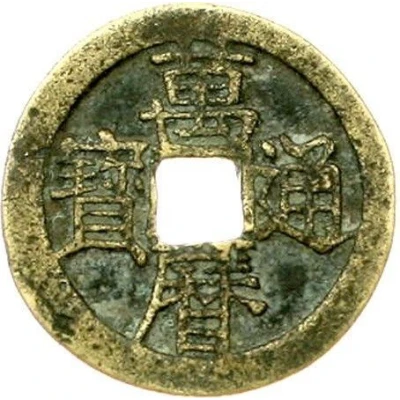


© Teutoburger Münzauktion
1 Cash - Wanli Tongbao; Zheng ND
| Brass | - | 24 mm |
| Issuer | Empire of China |
|---|---|
| Emperor | Ming dynasty › Wanli (明神宗) (1572-1620) |
| Type | Standard circulation coin |
| Years | 1576-1620 |
| Value | 1 Cash |
| Currency | Cash (621-1912) |
| Composition | Brass |
| Diameter | 24 mm |
| Shape | Round with a square hole |
| Technique | Cast |
| Orientation | Medal alignment ↑↑ |
| Demonetized | Yes |
| Updated | 2024-10-04 |
| Numista | N#222151 |
|---|---|
| Rarity index | 97% |
Reverse
One Chinese ideogram above.
Script: Chinese (traditional, regular script)
Lettering: 正
Translation:
Zheng
[Uncertain mint]
Edge
Plain
Comment
While casting was stopped at the last emperor's death in 1572, it was resumed again in 1576 at the Peking and Nanking mints. Soon after, mints in Yunnan, Shanxi, Shandong, Henan, Shaanxi, Jiangxi, Fujian, and Huguang were also opened. However, due to poor circumstances, the Wanli coins were a failure, and by 1582, all mints except for Huguang closed. There was an attempt to open mints in 1599, including opening a Board of Works in Nanking, although so many coins were produced there that casting was cut back, and other mints were closed.Interesting fact
The Wanli era (1576-1620) was a time of great economic growth and cultural achievement in China, and the 1 Cash coin was a widely used denomination during this period. The coin was made of brass, which was a significant change from the earlier coins that were made of iron or other metals. The use of brass for coins was a technological advancement that allowed for more efficient production and greater durability. The 1 Cash coin was also notable for its standardized design, which featured a square hole in the center and a rim with a wavy pattern. This design became a standard for future Chinese coins and was used for many centuries.